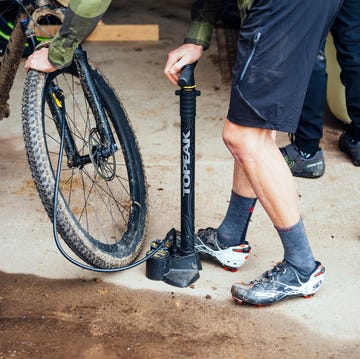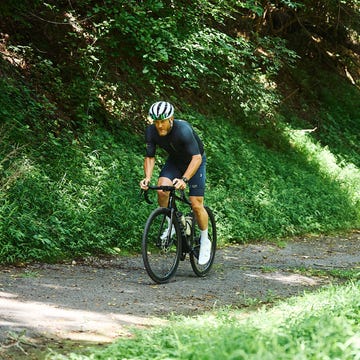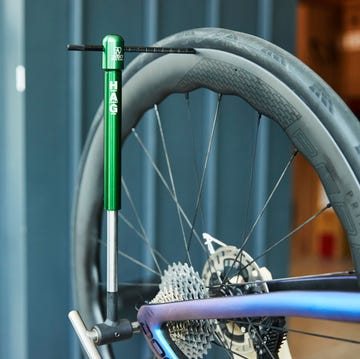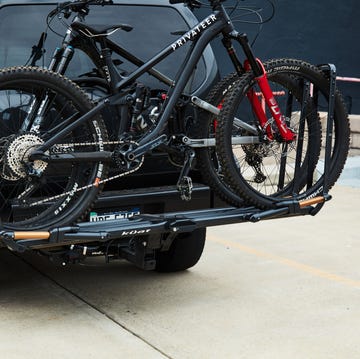Long rides are great. They allow you to spend extra time on your bike and see more things, and they can provide a physical and mental challenge. Many seasoned riders already have their go-to set-up and routine. But, what if you’re new to cycling or riding longer distances? Or perhaps you are returning to riding after an extended break and want some tips and tricks for longer days in the saddle.
Unfortunately, there isn’t a simple definition of “long ride”. It can mean high mileage or more hours on the bike. What constitutes long in either distance or time can vary greatly by the rider—discipline, terrain, elevation gain, weather, training, and other obligations in life all factor into how we each define a “long ride”. If one hour is long for you, great. And if a minimum of six hours is how you define a long ride, that is also great.
My threshold for a long ride is three hours (or roughly 45 miles at a 15 mph pace). I plan a morning or afternoon around a long ride, often a route I map in advance. When I asked my Bicycling colleagues “What do you consider a long ride?” the replies ranged from two to four hours. Dan Chabanov added, “I would say it's any ride that will require a stop for refueling;” that is another great benchmark for a long ride.
Regardless of how you define it, your gear choices can help improve your long-ride experience. Some gear enhances comfort, while others add convenience or peace of mind. Some equipment is also important for rider safety. Below are my top six gear picks to ensure a successful long ride.
For Comfort
Tire Pressure
Many cyclists ride with too much air in their tires and dialing in your ideal tire pressure has some significant upsides. For most, the most noticeable impact is improved comfort. Dropping your tire pressure reduces road buzz transferred to your hands on long rides, and eases the repetitive jarring on many riders’ lower backs. Additional benefits are added grip in turns and better traction on loose surfaces like gravel or dirt.
Several websites and apps help riders find their best tire pressure; I often use SRAM’s pressure calculator. Silca’s version is rather straightforward. The Wolf Tooth tire pressure calculator and app have additional functionality and fine-tuning, like temperature compensation if you’re pumping up indoors and riding outside.
Many floor pumps have a pressure gauge. Two pumps we particularly like are the Silca Terra and Specialized Air Tool Comp. Pumps with a built-in gauge will work fine for most riders but if you want to improve your game, a shop-quality digital gauge is an excellent addition to your tool kit.
Chamois
Cycling-specific clothing is not required for riding but makes long rides much more enjoyable. Called a chamois, the padded part of cycling shorts or bibs helps reduce friction between your body and the saddle and provides some added cushion.
Bib shorts are popular with cyclists; the shoulder straps keep the shorts from slipping and are more comfortable around the belly. Traditional shorts are another choice and are easy to drop for a nature break. Padded liners or briefs are another option; they’re great for mountain biking and gravel riding when paired with baggy shorts or for cyclists who want the benefits of a chamois without the look of traditional form-fitting cycling apparel.
Bibs and shorts come in many styles, sizes, chamois densities, and prices. Basic padded shorts or bibs start around $30 to $40 and can cost upwards of $300 for models with advanced materials or from trendy cycling brands. (Rubber N’ Road even sells $560 bib shorts with a 3D-printed chamois.)
While the fit and features of high-performance bibs are great, I often wear the base-level options from Velocio, Rapha, or Pearl Izumi; I find them excellent in comfort and sometimes hard to tell apart from spendier options of the same brand. An option I seek out is a drop-tail design in women’s bib shorts; it’s a game changer.
Many cyclists use chamois cream with cycling shorts to help prevent or reduce saddle sores on long rides. A tip is to throw a single-serve packet of chamois cream in your bag for long rides and reapply if needed.
For Convenience
Cycling Computer
While you certainly do not need a cycling computer for a long ride—cyclists rode with paper maps or pace notes taped to top tubes for decades—using one can make things much easier. This is particularly true if you do not know the area you are riding. Modern head units with GPS mapping allow you to follow a preset route and often provide turn-by-turn directions. Many also recalculate your course if you need to detour or explore.
There are many ways to plan long-ride routes. One way is pre-made routes on sites like Komoot, Strava, and Ride With GPS; routes shared by friends, events, or clubs in your area are another option. Or, if you’re up to the challenge, planning a route yourself is very rewarding.
There is no perfect computer for every single cyclist. My favorite is the Hammerhead Karoo; units from Garmin, Wahoo, and Coros are also great and used by many who ride long distances. For me, “Route to Start” and “Route to Home” are two must-have navigation features in a cycling computer. They’re ideal for riders who like to explore or go out without a planned route (or if you need to cut a ride short due to weather or a mechanical).
Bar Bag
For years I stuffed my ride supplies (nutrition, rain jacket, phone, layers, etc.) in my jersey pockets; often resembling a squirrel’s cheeks packed with acorns. But now I’m a convert to bar bags for my longer rides. Bags keep your pockets from stretching out, allow you to bring the right gear for your ride, and reduce the chances of dropping things from your pockets.
There are dozens of bar bags available on the market. Pick the size and style that matches your budget and the gear you need to carry. If you don’t want to muck up your bike’s aerodynamics or if you don’t have the space on your bar, a frame bag is another option for carrying ride supplies.
For Safety
Lights
Safety and visibility are important considerations on long rides. A good front light is a must-have for rides after dark or in the twilight hours. Front and rear lights also help increase road and gravel riders’ visibility to drivers during daylight hours. Many lights are compact, lightweight, and have blinking modes that help grab drivers’ attention. Look for rechargeable models, but don’t forget to top them up before you head out for your ride.
Taillights with integrated radar are an increasingly popular option for gravel and road riders. These devices warn riders about vehicles approaching from behind. While lights and radar features will not prevent a rider from being struck by a driver, the increased visibility or warning helps reduce the chances of an incident.
Repair Kit
Long rides generally take you further from your home, vehicle, or wherever you started your route. These rides often take us to very lightly trafficked roads or areas without cell phone reception. This is why it’s important that you bring supplies to fix common repairs such as a flat tire or loose bolt.
Build out or purchase a pre-made repair kit including a spare tube, tire levers, a pump or CO2, and a multi-tool. For long rides, I usually carry two spare tubes, a backup inflation method, something to boot a tire, some cash, and an extra energy gel for emergency use.
As Deputy Editor, Tara Seplavy leads Bicycling’s product test team; after having previously led product development and sourcing for multiple bike brands, run World Championship winning mountain bike teams, wrenched at renowned bicycle shops in Brooklyn, raced everything from criteriums to downhill, and ridden bikes on six different continents (landing herself in hospital emergency rooms in four countries and counting). Based in Easton, Pennsylvania, Tara spends tons of time on the road and trail testing products. A familiar face at cyclocross races, crits, and bike parks in the Mid Atlantic and New England, on weekends she can often be found racing for the New York City-based CRCA/KruisCX team. When not riding a bike, or talking about them, Tara listens to a lot of ska, punk, and emo music, and consumes too much social media.



















